Introduction
Understanding APIs and leveraging them effectively is crucial in today's digital landscape. APIs, or Application Programming Interfaces, serve as the bridge that allows applications to communicate and exchange data seamlessly. They are the unsung heroes that bolster the backbone of the software we use daily.
By repurposing existing functions, APIs enable developers to fast-track development, enhance performance efficiency, and exceed customer expectations. In this article, we will explore the basics of APIs, choosing the right API framework, setting up the development environment, designing the API architecture, implementing API endpoints, handling API requests and responses, error handling and debugging, securing the API, testing and deploying the API, and best practices for API development. By the end of this article, you will be equipped with the knowledge and tools to harness the power of APIs and maximize productivity and efficiency in your software development endeavors.
Understanding API Basics
Understanding APIs begins with grasping the essentials of software communication. An API, or Application Programming Interface, serves as a critical 'middleman' in the digital ecosystem, enabling applications to interact seamlessly.
Imagine a world where applications can't share information; the API is the bridge that allows them to 'talk' to each other, exchanging data and functionalities that enrich the user experience. In the ever-evolving realm of technology, APIs are the unsung heroes that bolster the backbone of the software we use daily.
They are much like the interface of an ATM, where just as customers use the screen and buttons to communicate with their bank accounts, applications use APIs to request and receive services from other software systems. APIs liberate developers from duplicating efforts by providing a sophisticated way to repurpose existing functions.
A developer can weave an existing API into new software, thereby fast-tracking development and enhancing performance efficiency. Statistics amplify the crucial nature of these integrations, underscoring that the methodical collection, interpretation, and representation of data underscores every successful API deployment. Just as a calculated mean balances out diverse data points, so does a well-implemented API harmonize different software applications, creating a stable and efficient digital environment. It's not just about coding it right; it's about hitting the nail on the head by focusing on 'Needs' versus 'Wants' of the users, as industry experts emphasize. By deeply understanding customer requirements, developers can ensure that APIs not only meet but exceed expectations, propelling businesses forward in the competitive digital space.
Choosing the Right API Framework
Choosing the right API framework is pivotal to ensure the seamless development and longevity of your API. APIs function as the critical connective tissue in the software landscape, permitting discrete systems to interact.
This interoperability is harnessed most effectively when adhering to the API-First Development approach, which prioritizes the creation of APIs at the onset of development. When selecting a framework, ponder its performance reputation and scalability, considering APIs are now more vital than ever in our data-rich, interconnected technological environment.
Google even labels APIs as the 'crown jewel of software development', highlighting their role in empowering developers to conceive intricate and robust applications integrated with diversified services. As echoed in the advice from seasoned professionals, the focus should be on the 'Needs' versus 'Wants' of the consumer, ensuring the selection process is grounded in meeting fundamental requirements.
The lesson is not just to build things right, but to build the right things that genuinely address the multifaceted needs of users. Moreover, with new studies underscoring how MySQL tuning significantly amplifies Drupal performance, the importance of database management when using APIs should not be underestimated. Echoing this ethos, frameworks should not just perform well in theory, but evidence of their success, aptly showcased by high-performance production applications, must guide our choices. In essence, your API framework should encapsulate the essential capacities to facilitate not just your current requirements, but also anticipate future exigencies and expansion.
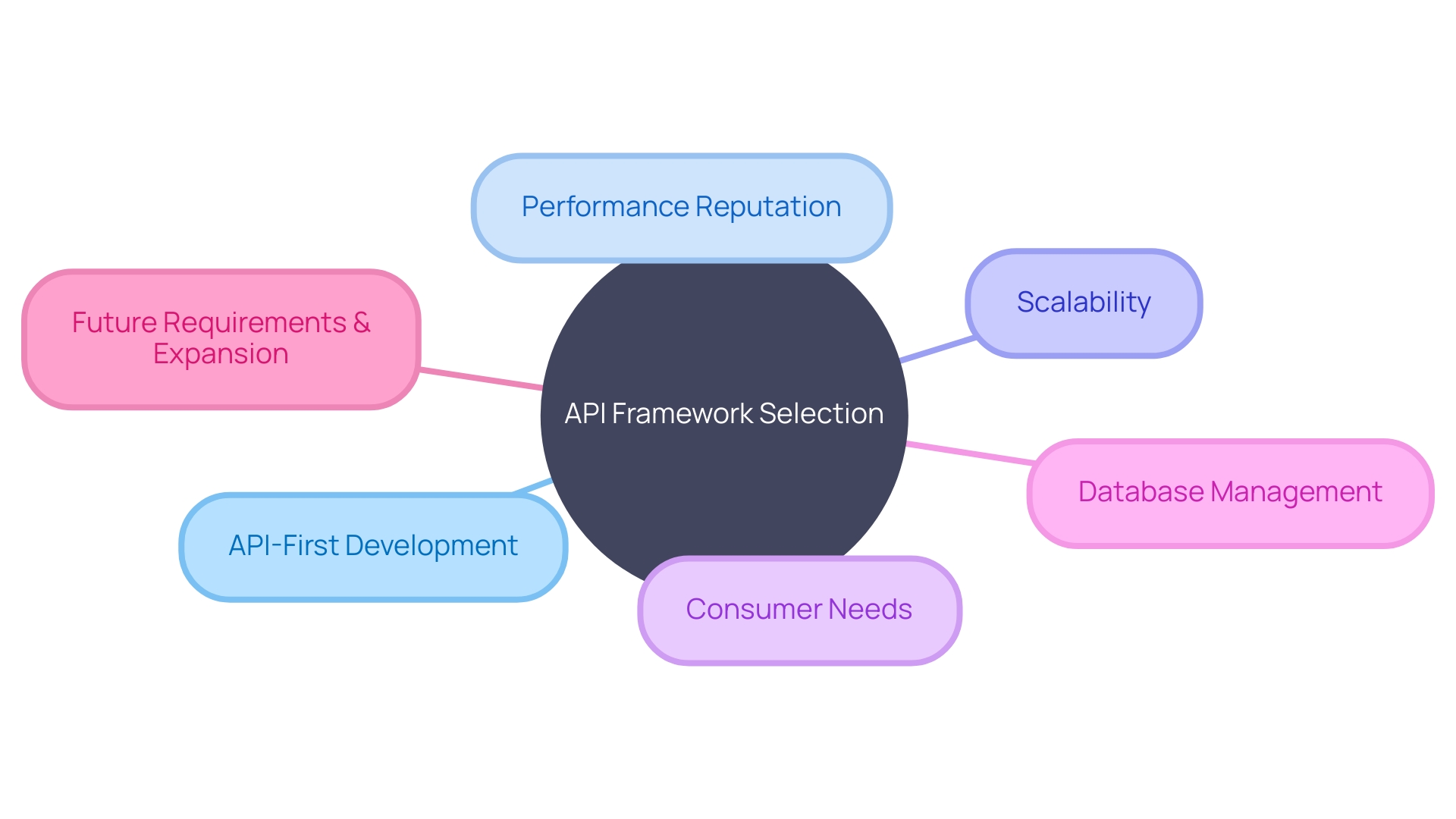
Setting Up the Development Environment
Setting up your development environment is the first critical step towards crafting a robust API. To facilitate seamless communication between various software applications, akin to enabling diplomatic dialogues between independent kingdoms, APIs require a meticulously configured environment. API (Application Programming Interface) sets the stage for different software components to request and exchange information, access functionalities, and share data across varying platforms.
Key to this process is understanding the CRUD operations: Create, Read, Update, and Delete, which form the cornerstone of the interactions your API will handle. Constructing new records (Create), fetching existing data (Read), modifying records (Update), and removing them (Delete) embodies the essential capabilities of any successful API. Embracing an API-First Development approach ensures that you're not merely addressing customer 'wants' but their fundamental 'needs'.
A lesson highlighted by leaders in financial and technological sectors emphasizes the importance of building systems that cater to a multitude of user needs, rather than a narrow focus. This insight is critical to remember as you install necessary tools and tailor your environment for API development. Doing so will enable you to create an API platform that meets the high standards of reliability, efficiency, and scalability required in today's data-driven landscape.
Designing the API Architecture
Understanding that APIs are the translators allowing diverse software programs to interact, it's essential to design them with precision and foresight. Adopting methodologies such as Hexagonal Architecture, also known by insiders as Ports & Adapters Architecture, can vastly improve the robustness of your system. A method popularized by agile pioneer Alistair Cockburn, this approach focuses on separating the application's crucial business logic from the external components like databases and user interfaces, leading to a software structure that is inherently more maintainable and scalable.
The AI wave's influence on modern technology, evidenced by the meteoric rise of platforms like ChatGPT which garnered 100 million users in just two months, underscores the ever-growing significance of agile, user-focused software development. Integrating this ethos into API architecture involves prioritizing user 'needs' over 'wants', as described by lessons from major financial institutions. This distinction, drawn from understanding the core utility rather than the superficial desire—like the public's historical preference for 'faster horses' over the then-unknown automobile—ensures that APIs are designed to serve actual requirements effectively.
Today, APIs are more crucial than ever, serving as the backbone of innovation in software development. Recognized as the 'crown jewel' by giants like Google, APIs empower developers to create more advanced applications by fostering collaboration with stakeholders and integrating emerging technologies. As big data continues to unlock new information, the strategic design of APIs is paramount in enhancing web-based activities and propelling industry standards forward.
Implementing API Endpoints
Embarking on the construction of API endpoints is akin to building bridges in the digital realm. These bridges enable the flow of information between software applications, leveraging predefined protocols and guidelines.
RESTful APIs stand out in their capacity for straightforward data operations, and these are among the various types you might select. When developing these endpoints, one delves into setting up different types to address diverse functionalities, handling HTTP methods ranging from GET to POST, and seamlessly integrating query parameters alongside request bodies.
Understanding that it’s critical to home in on user 'Needs' rather than 'Wants,' it’s essential for developers and data engineers to engage deeply with their audience to ensure that the APIs built are not just technologically sound, but also truly satisfy user demands—much like circumventing the need for 'faster horses' with the invention of the automobile. It's not just about building any solution; it’s about constructing the right one that addresses real-world problems with precision and effectiveness. In our pursuit to guide you through API development expertise, we will not only tackle the mechanics but also understand the importance of crafting APIs that are robust, efficient, and scalable, catered to both the granular details and the grand scale of modern software needs. As we proceed, expect to be outfitted with the tools necessary for your applications to excel in today's interconnected, data-centric environment.
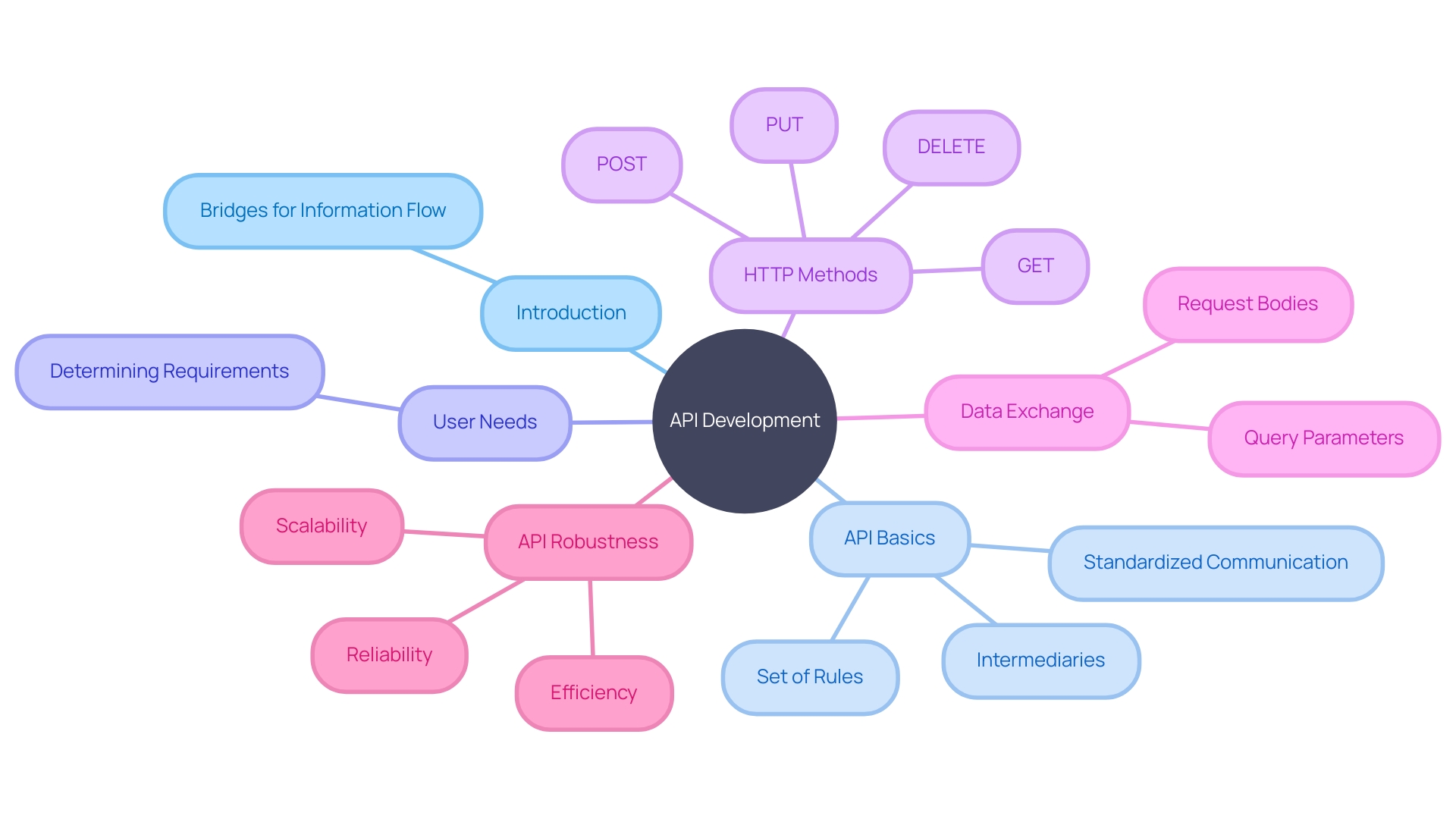
Handling API Requests and Responses
Mastering the art of processing API requests and constructing responses is a linchpin for fostering an exceptional user experience. Delving into the realm of APIs, it's pivotal to know that the measure of a 'good' or 'bad' API response hinges on various factors like industry benchmarks, user anticipations, and the unique demands of the application.
To ensure a responsive API, one must effectively parse and validate incoming data, generate timely responses, and handle errors with finesse. The nuanced understanding of what constitutes an optimum response time will significantly enhance one's capability to build and maintain robust APIs.
For example, Nick Tune shares an intriguing encounter from his time on a project with Lufthansa, where the complexity of the word 'Flight' in their software modeling led to multiple meanings - each with critical implications on the system's communication processes. Similarly, the notion of 'Accounts' varies immensely across departments, with sales seeing it as a customer record, whereas other departments may view it differently. Thus, it is imperative to approach API handling with an awareness that caters to these multifaceted interpretations and expectations. Advanced skills are beneficial, but even those with intermediate expertise can apply the detailed insights provided within this discourse to fine-tune their APIs in any codebase – coding examples notwithstanding.
Error Handling and Debugging
Mastering API development is essential in the software engineering landscape, where the flow of information between applications is crucial. A practical example of such integration can be seen with weather service APIs providing real-time and historical weather data.
This is just one facet of the larger API-First Development strategy that emphasizes building scalable and effective software from the ground up. In pursuing excellence in API construction, one key resource stands out: Kodezi—a platform that not only simplifies the debugging process but also bridges the gap between encountering an issue and understanding it.
By automating bug analysis and offering immediate fixes alongside detailed explanations, Kodezi empowers developers to learn from each bug, preventing similar issues in the future. Additionally, the tool caters to efficient code development through features like code generation from questions, intelligent commenting, code refactoring for optimized performance, and straightforward code explanations for better comprehension. With integrations available for Visual Studio Code and a handy web-based IDE, Kodezi is crafted to bolster your efforts in API development, helping you construct resilient applications in a tech landscape that's constantly evolving.
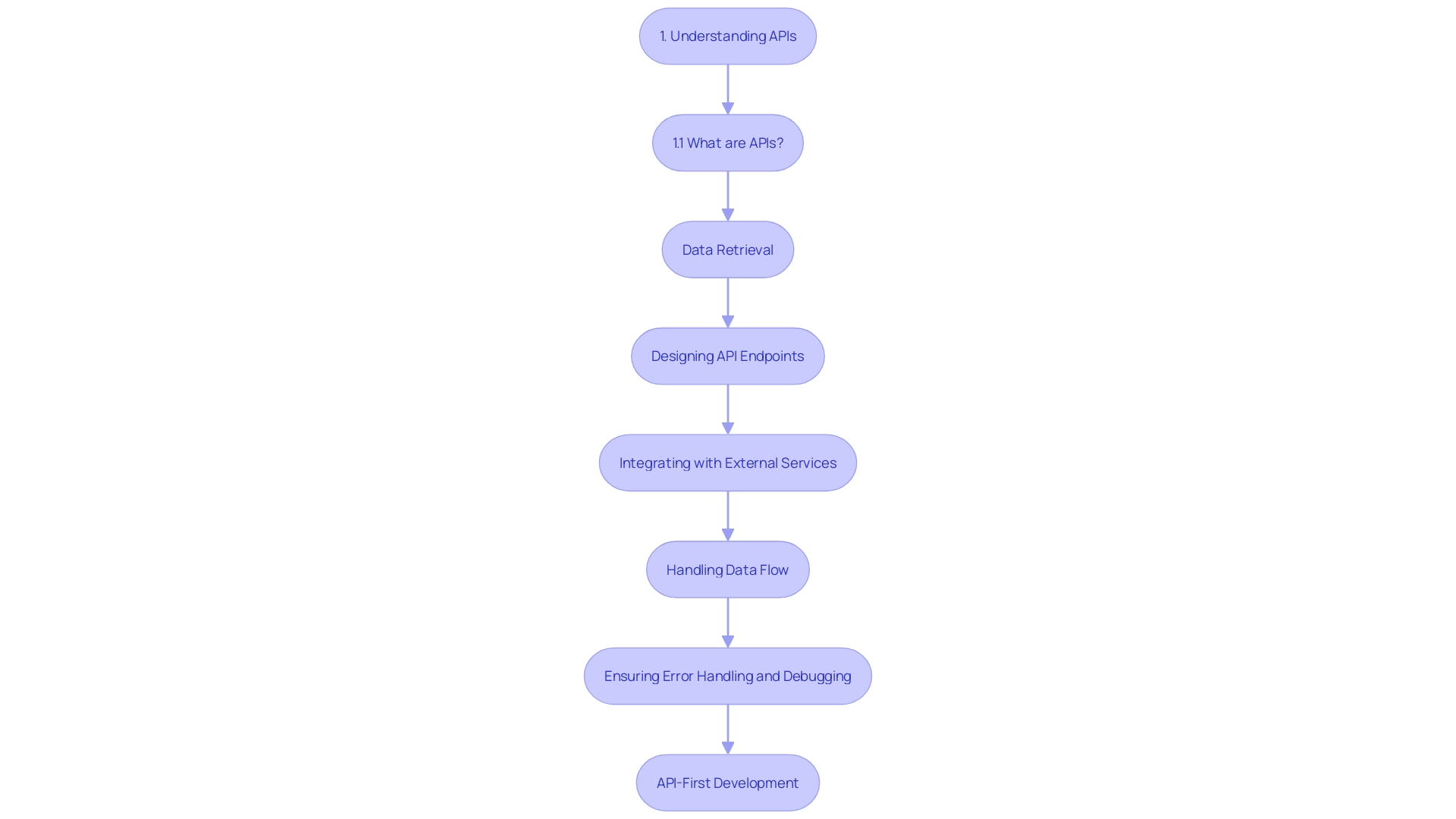
Securing the API
In today's digital ecosystem, API security is an indispensable facet of maintaining a robust online presence. As the lifeline that connects different applications and facilitates data sharing, the security constraints placed on APIs stand at the front lines against unauthorized info siphoning.
The sharp rise in API-related breaches highlights the scale of disaster when personal and financial data falls into the wrong hands, leading to catastrophic repercussions such as identity theft. Thus, cementing your API's defenses extends beyond mere best practices; it underpins the trust and reliability of your entire digital framework.
To address these critical security challenges, Kodezi offers a comprehensive API protection solution. It's designed with privacy at its core, employing industry-standard 256-bit AES encryption to ensure that your code remains fully encrypted and is never stored.
SSL encryption safeguards your data during transit, while encryption ensures data integrity while analyzing and debugging. Rest assured that Kodezi's proprietary trained models prioritize your privacy, and with SOC 2 Type II compliance, you can trust in a system that meets high standards for managing and securing data. Kodezi’s intelligent AI engine operates directly in your browser, guaranteeing that your data and code are actively protected against threats. For more detailed insights on how Kodezi fortifies your digital assets, explore our documentation on code privacy.
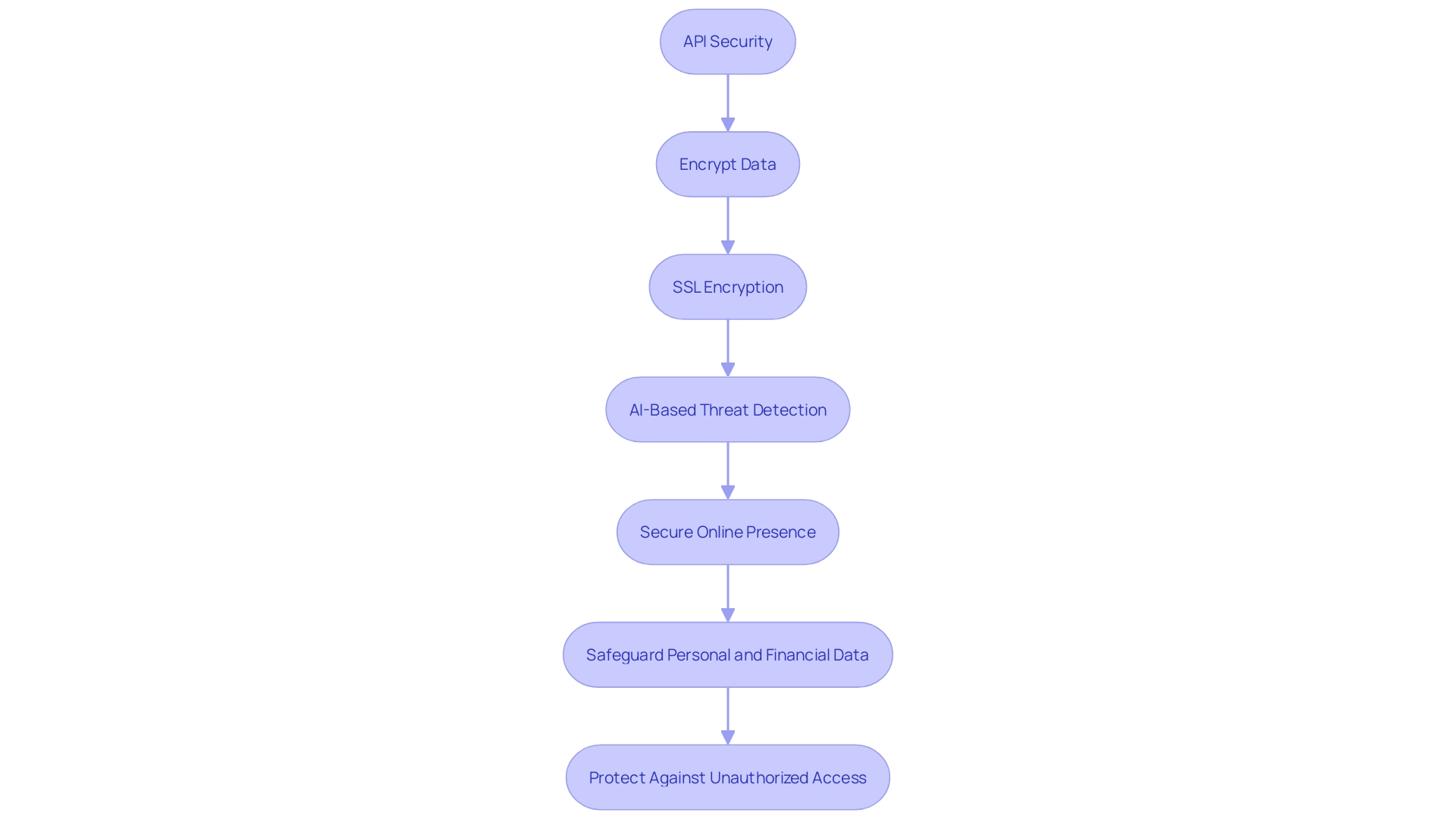
Testing and Deploying the API
As the digital backbone of software applications, APIs must function seamlessly to ensure application robustness. Thoroughly testing your API before launching can make all the difference.
Delve into the realm of API test automation, where tools like Postman shine with their rich features and friendly interface. API Automation Testing acts as a regular health check, scrutinizing the critical blocks that uphold your software's operation.
API testing strides beyond mere functionality; it includes unit, integration, and performance testing, all pivotal in fortifying your API against real-world demands. The effective orchestration of API Automation Testing involves a well-planned testing cycle, with intervals adjusted in response to real-time feedback.
This ensures APIs consistently deliver performance that meets or surpasses user expectations. Consider this perspective: APIs are not merely a technical facet but are foundational to our digital convenience and efficiency. As such, they demand ongoing maintenance to sustain their pivotal role. Launching your API to production goes beyond deployment; it's about actively engaging in a rigorous testing process to guarantee the seamless integration and functionality of your APIs.
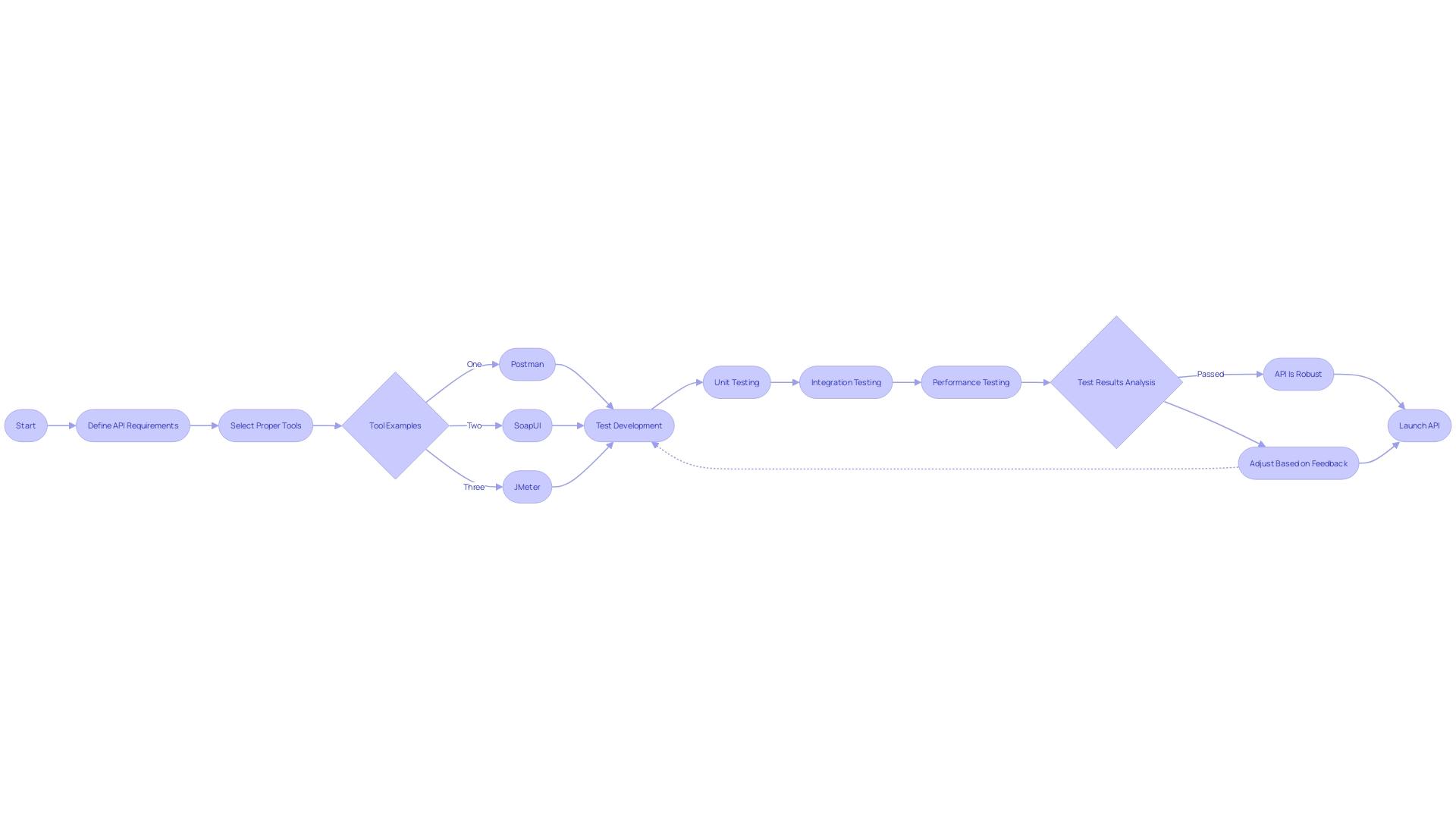
Best Practices for API Development
Creating a high-caliber, maintainable API is a multifaceted endeavor encompassing not only coding but strategizing and understanding the significance of APIs in your business model. Recognizing APIs as critical elements for modern software development—Google even refers to APIs as the 'crown jewel' of the field—the first step is to fathom why they are integral to delivering business value and client satisfaction.
Analyzing APIs from diverse perspectives and considering their usage by different end-users is pivotal to tailor the design to their needs. Central to API development is providing clear, comprehensive documentation—essential for developers to utilize the API effectively.
Adequate version control and robust error handling are also indispensable practices, ensuring smooth and continuous integration. Furthermore, performance optimization can't be overlooked, as it directly impacts user experience and system reliability.
Recent discussions in the tech community and statistics from studies by organizations such as Traceable and Ponemon Institute highlight a troubling trend: 60% of firms have experienced at least one data breach linked to APIs in the past couple of years. This underlines the need for secure API design to preempt data leaks and unauthorized data exposure. Engaging with fellow developers in forums can lead to insightful discussions and potential improvements in API practices. Ultimately, these best practices aim to construct APIs that are not only robust and scalable but also secure and aligned with the needs of developers and the businesses they support. This holistic approach to API development is what transforms a good API into a great one.
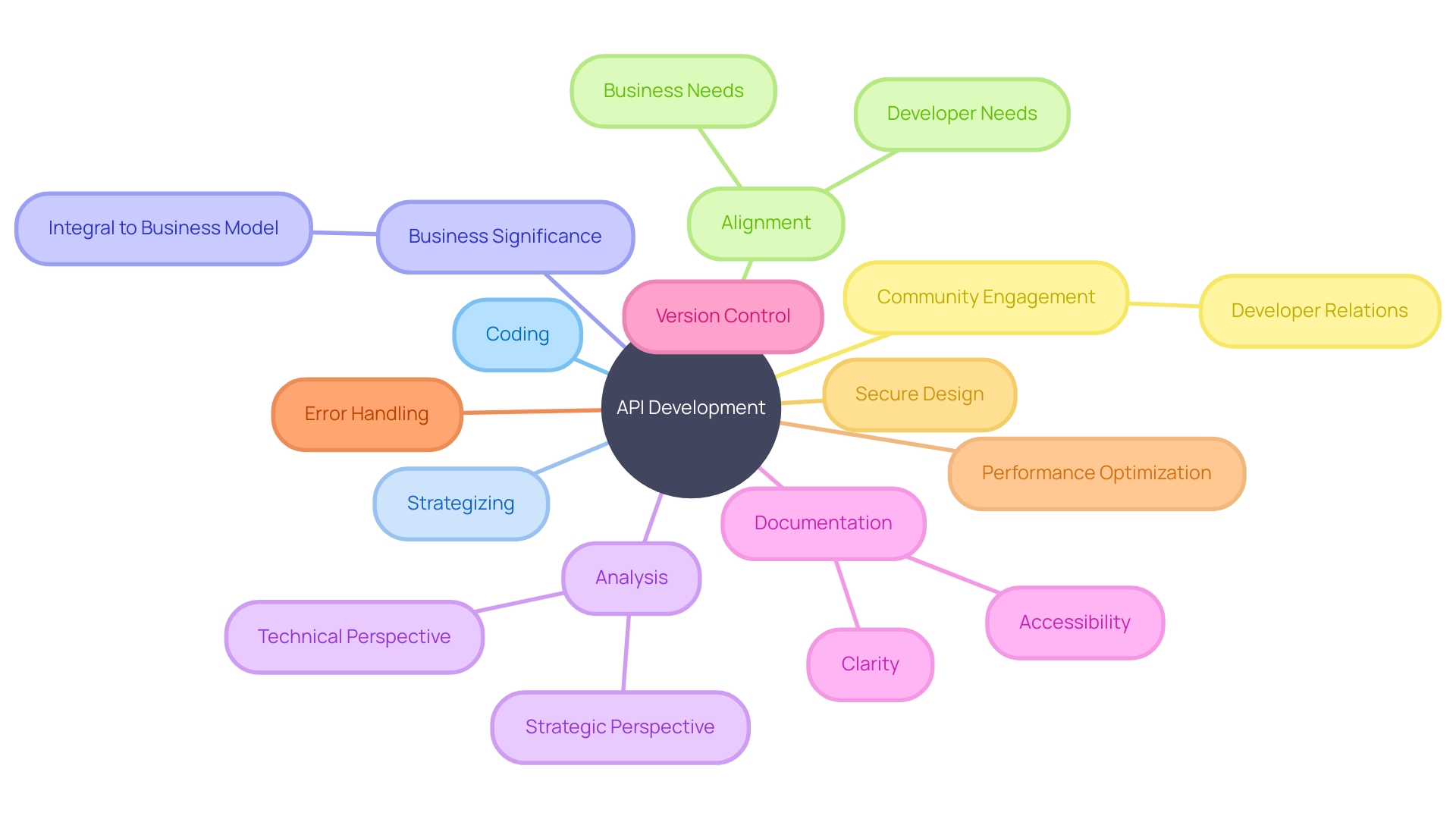
Conclusion
In conclusion, APIs are essential for seamless communication between applications and improving user experiences. They fast-track development, enhance performance efficiency, and allow for repurposing of existing functions. Choosing the right API framework and setting up a development environment with an API-First approach are crucial for longevity and scalability.
Designing API architecture with precision, focusing on user needs, and integrating emerging technologies enable the creation of advanced applications. Effective implementation of API endpoints, handling requests and responses, and thorough error handling and debugging contribute to successful API development. API security is paramount in today's digital landscape, and solutions like Kodezi offer comprehensive protection with encryption and compliance standards.
Rigorous testing and deployment ensure seamless functionality and robustness. Adhering to best practices such as clear documentation, version control, and performance optimization is key. By following these principles, developers can maximize productivity and efficiency in software development, meet customer expectations, and drive innovation in the interconnected, data-centric world.
APIs empower businesses to create exceptional software applications that stand out. In summary, APIs play a critical role in modern software development by facilitating seamless communication and improving user experiences. By adhering to best practices, choosing the right framework, implementing robust architecture, handling requests and responses effectively, and prioritizing security and testing, developers can harness the full potential of APIs and create outstanding software applications in today's digital landscape.
Frequently Asked Questions
What is an API?
An API (Application Programming Interface) is a software intermediary that allows different applications to communicate and share data seamlessly, acting as a bridge between them.
Why are APIs important in software development?
APIs are crucial because they enable developers to reuse existing functionalities, streamline the development process, and enhance software performance and interoperability.
How does the API-First Development approach benefit software projects?
The API-First Development approach prioritizes the creation of APIs at the onset of software development, ensuring that applications can effectively interact from the beginning, which enhances scalability and eases future updates.
What are CRUD operations and why are they significant?
CRUD stands for Create, Read, Update, and Delete. These operations are fundamental actions that an API can perform, forming the foundation of how software applications interact with data.
How can I choose the right API framework?
When selecting an API framework, consider its performance reputation, scalability, and how well it meets the fundamental needs of your users. Look for evidence of success in existing applications.
What is API architecture and why is it important?
API architecture refers to the design and structure of an API. A well-designed architecture, such as Hexagonal Architecture, separates business logic from external components, leading to more maintainable and scalable applications.
What are API endpoints?
API endpoints are specific paths in an API that handle requests and responses. They define where and how an application can access resources via HTTP methods such as GET and POST.
How should I handle API requests and responses?
Effective handling of API requests and responses involves parsing incoming data, validating it, generating timely responses, and managing errors efficiently to ensure a positive user experience.
What is the role of error handling in API development?
Error handling is essential in API development as it ensures that issues are managed gracefully, providing users with helpful feedback and maintaining application stability.
How can I secure my API?
API security involves implementing measures such as encryption, authentication, and adhering to best practices to protect sensitive data and prevent unauthorized access.
Why is testing important before deploying an API?
Thorough testing ensures that an API functions correctly under real-world conditions. It includes checking for functionality, performance, and integration, helping to prevent issues after deployment.
What are best practices for API development?
Best practices include providing comprehensive documentation, ensuring robust error handling, implementing version control, optimizing performance, and prioritizing security to create reliable and maintainable APIs.
What is Kodezi and how does it assist in API development?
Kodezi is a platform that simplifies debugging and enhances API development by automating bug analysis, offering immediate fixes, and providing tools for efficient code development, ensuring resilient applications.
What should I consider for API documentation?
API documentation should be clear and comprehensive, enabling developers to understand how to effectively utilize the API. It should include examples, parameters, and error codes to aid usage.
How can I keep up with API security trends?
Staying informed about API security trends involves engaging with the tech community, following industry news, and implementing the latest best practices to mitigate risks of data breaches and unauthorized access.




